National Council
The Canadian Canoe Museum’s National Council is a group of distinguished individuals who are passionate about the work of the organization – past, present and future.
They believe in the importance of the canoe to Canada, and have lent their support and enthusiasm to the building of this new museum of national significance.
Meet the National Council
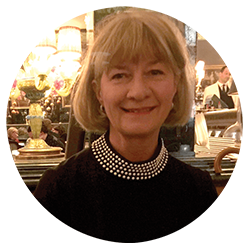
Shelley Ambrose
Publisher, The Walrus and Executive Director, The Walrus Foundation – Ontario
“Before telegrams and faxes, before radio and television, before computers and telephones, before newspapers and magazines, there was the canoe…. the first real means of communication between people on this land now called Canada. The rivers and lakes were the ways, the canoe and the kayak the means. The history and culture of the canoe is our collective history and culture and The Canadian Canoe Museum is a place of science and wonder, containing not only the most comprehensive collection of canoes, but a fascinating and important history of Indigenous and non-Indigenous people and of centuries of communication and transportation. Through the extraordinary programs, exhibits, and activities offered at The Canadian Canoe Museum, the craft of building a canoe and the culture of canoes and of this country comes alive for young and old. A stunning building in a stunning location, it will be a draw for locals and tourists and will join institutions like The Museum of History and The Royal Ontario Museum on the MUST GO list.”
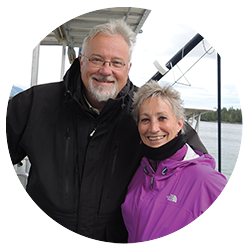
Thomas D. Andrews and Ingrid Kritsch
Archaeologists and Anthropologists – Northwest Territories
“Working in collaborative heritage research with various Northwest Territories Dene groups over the last 40 years has clearly demonstrated the critical role that birch bark canoes, moose skin boats, and other traditional watercraft played in allowing families to traverse a storied cultural landscape safely, while using travel as a tool to socialize and educate their children in the ways of the land. For us, sharing our experience with The Canadian Canoe Museum is a wonderful way to honour and thank the many Dene elders that have kindly shared their knowledge and taught us over the years.“
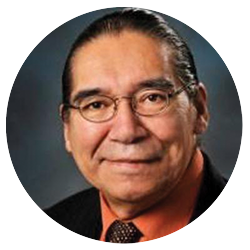
Stephen Augustine
Hereditary Chief, Sigenigtog District Mi’kmawey Mawiomi, Associate Vice President, Indigenous Affairs and Unama’ki College – Nova Scotia

Brian Back
Founder and Editor of Ottertooth.com – Ontario
“My father took me for my first canoe ride in Temagami when I was a toddler and I have been bonded to the canoe since. Through it, I touch Canada’s heritage and its First People. The canoe was there at the beginning, a link between nations and peoples. I remember when Kirk Wipper was constructing the log museum at Kandalore for his germinating collection. I knew then that his dream should be every Canadian’s dream: to celebrate, understand and preserve the root of our society.”
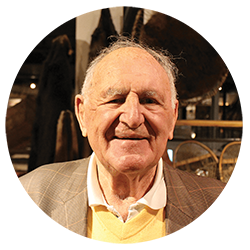
Bob Baun
Former NHL Player, Businessman and Ontario Sports Hall of Fame Inductee – Ontario
“What first drew me to the museum was Kirk Wipper, who was a dear friend. He was my type of man, an outdoorsman. And he knew that part of learning to live properly is to have that outdoor exposure in one’s life, and that in Canada there’s probably no better way to do that, than in a canoe. Kirk introduced me to his canoe collection, I saw the potential for mentoring youth but I also saw what a workhorse these amazing vehicles, built by our Native Peoples, were in building this country. I see the museum doing this with its youth programs—a carry-on of Kirk’s belief that building healthy attitudes in young people, helping them to enjoy life to the fullest, and helping them learn about the amazing history of this country, is the best way to create fully contributing adults.”
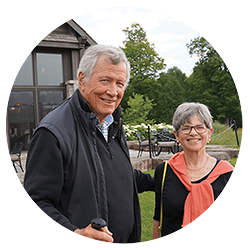
Rick and Priscilla Brooks-Hill
Community Builders and Philanthropists – Ontario
“Being in the canoe museum reminds me of early days at the family cottage on Stoney Lake. There were six of us on a small island with only a canoe and one small boat with a 7.5 hp Evinrude (probably made at Outboard Marine Corporation in Peterborough, where the museum is located now). It seemed somebody always had the small boat on the other side so most often the only way to get off the island was to paddle the canoe. Remembering that and the role of the canoe in shaping Canada, we have been delighted to support the work of the museum over the years, to be part of the Founder Circle of donors, and now to add our voices to the new National Council.”
It is with great sadness that we share that National Council member, Rick Brooks-Hill has passed away. He is remembered fondly in a tribute by Ken Powell, Director and Past Chair of the Canadian Canoe Museum
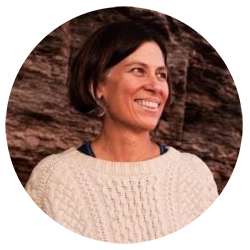
Meredith Brown
Founding Ottawa Riverkeeper (retired), Biologist, Community Builder – Québec
“My curiosity and love of lakes and rivers has been deepened by my ability to explore by canoe. My love of canoeing is an integral part of my Canadian identity and has shaped me from an early age. I have witnessed the power and beauty of the canoe while paddling with my sisters every summer as we grew up, during my first job as a teenaged canoe instructor, throughout my career as a Riverkeeper and as a mother, introducing my children to the canoe before they could walk. It is an honour to serve on the National Council for The Canadian Canoe Museum. Like our rivers, the canoe connects Canadians and is a powerful means to bring people together and connect us to the water that sustains us.”
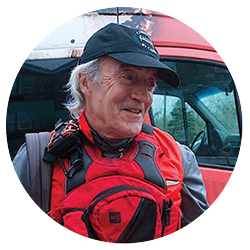
Bill Buxton
Paddler, Public Intellectual and Principal Researcher, Microsoft Research – Ontario
“I find it difficult to separate paddling from who I am and what I aspire to be – as an individual, professional, or citizen. My association with the Canadian Canoe Museum, its people and its activities, has provided a more than welcome lens through which I have gained an ever greater appreciation of the meaning and potential latent in such relationships. For someone involved in the conception, research, and design of digital technology, it was learning to build, maintain and travel in the wilderness in a birchbark canoe which provided some of the most valuable insights into contextualizing the modern technologies which I deal with day-to-day. None of this would ever have happened without the Canoe Museum. That was the start of our relationship – and now they will never get rid of me. They are too important to abandon or neglect – by me, for where our culture can go, and yes, by Canada.”
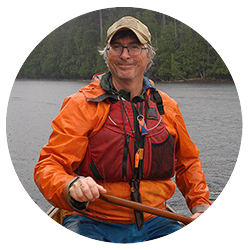
Kevin Callan (aka “The Happy Camper”)
Paddling Personality, Author, Wilderness Enthusiast – Ontario
“I’ve been connected to The Canadian Canoe Museum since its conception, when their collection of historic canoes were finally moved from storage in a dusty old barn to where they are now. Since then I’ve helped support all the goodness that comes out of that place; that incredible stock-pile of Canadian canoe culture. To me, it’s not just the vessels themselves that have inspired me. It’s where they’ve been; what wilderness journey did they go on; and who was lucky enough to be the one who sat in the bow or stern. Wilderness canoe tripping has forever been my solace, and writing about paddling tranquil lakes and rushing whitewater has become my living. My first canoe wasn’t historic. I found it at the dump. It was a prospector design, made of fiberglass, had three keels, and had no company logo on it – just a roadrunner sticker pasted on the bow. I brought it home and patched it up. The research for my first two paddling guide books were done in that canoe. I called her Gertrude, named for Katherine Hepburn’s canoe in the classic ‘80s film, On Golden Pond. I’ve gathered quite a few canoes since then, some that resemble Bill Mason’s iconic red prospector, and some decorated up like something Super Dave Osborne would have paddled. No matter the colour, the design, or the age of the canoe, they’ve taken me to some amazing wild places. That’s what The Canadian Canoe Museum represents: a collection of memories from past wilderness journeys; ones that have shaped our country and characterized us as Canadians.”
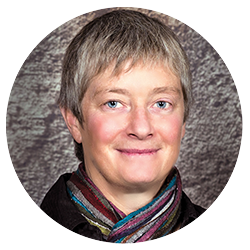
Barb Cameron
Paddler, Musher, Educator and former Director Prince of Wales Northern Heritage Centre – Northwest Territories
“Indigenous origins of the canoe have placed it at the top of the list as one of the most iconic symbols of our collective Canadian identity. As individuals, we all need to better understand and appreciate the many traditional Indigenous cultural contributions and influences that have shaped who we are as a Nation. Throughout my life, I have nurtured a deep love of the canoe that began in a close-knit family of outdoor enthusiasts. Canoeing is what brought me to the NWT over 35 years ago, after landing a summer job fresh out of university, with the City of Yellowknife to teach canoeing to locals. Some of my fondest memories include canoe journeys across thousands of kilometers along northern waterways. A highlight was one paddling trip with Indigenous youth from Yellowknife along the Nahanni River guided by cultural advisor, Gerald Antoine, currently Chief of the Liidlii Kue Dene First Nation in Fort Simpson. Through storytelling and spiritual guidance he shared invaluable perspectives on the landscape, Dene culture, language and history. Three decades of museum work at the Northern Heritage Centre work taught me the importance of building relationships with communities, learning to focus first on honouring people, their cultural practices, skills and technologies. In collaboration with the Council and others, I look forward to offering my input to the ongoing agenda of renewal at The Canadian Canoe Museum.”
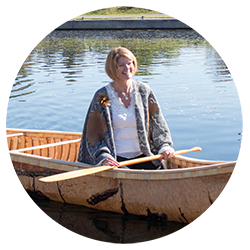
Hiawatha First Nation Chief Laurie Carr
First Nations Leader and Community Builder – Ontario
“Prior to contact, and for many years, our peoples used the canoe to travel the waterways to move within the traditional territories for hunting, fishing, harvesting, and trade. Today, we still use the canoe for hunting, fishing harvesting and as a source of recreation. It is an honour for us to see that the canoe has now become a cultural mainstay with not only Indigenous peoples continuing to use it, but also non-Indigenous peoples using it as a source of recreation and sport.”
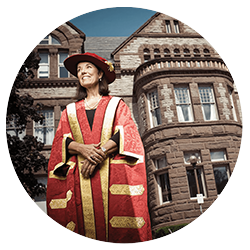
Wendy Cecil
Philanthropist and Former Chancellor, Victoria University (U of T) – Ontario
“Whether Canadian by birth or by choice, learning about the canoe – both its practicality and its magic, is the gift The Canadian Canoe Museum gives to Canadians and visitors. Choosing to support The Canadian Canoe Museum is as natural as gliding on the water in an exquisitely perfect vessel. I am a champion of The Canadian Canoe Museum, and a member of the National Council, because I believe that through the spirit of the canoe, the Museum is a ‘country-builder’.”
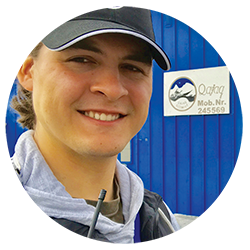
Robert Comeau
Student at Law, Qujaq Builder, Inuit Social and Cultural Historian – Nunavut
“The opportunity to support The Canadian Canoe Museum through the National Council offers a means to highlight Inuit contributions to Canadian society through the qajait and umiait. The Museum is also a repository of thousands of years of knowledge so it is exciting to be a part of something this significant.”
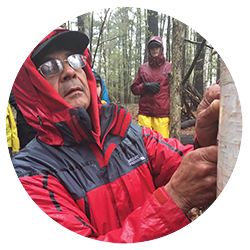
Chuck Commanda
Bark Canoe Builder and Culturalist – Ontario
“When I built a bark canoe at the museum last year, it completed a circle started by my Grandfather William Commanda. The messages of his work and mine are the same: we all share responsibility for taking care of the natural world. Like my grandfather said, ‘It’s not an Indigenous thing any more. It’s a human thing, to share the responsibility for taking care of nature.’ This is why I am delighted to be affiliated with The Canadian Canoe Museum and to join the National Council. What is happening at the museum is not only about the preservation of the canoe and the history of the canoe, but about the preservation of nature and humanity as well. The Canadian Canoe Museum is using that idea to its advantage. No other museum I know about has taken that step, that role.”
WATCH NOW: Episode 1, National Council in Conversation with Chuck Commanda
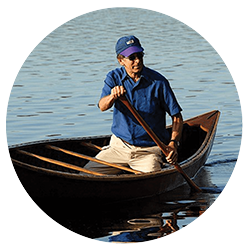
Claude Cousineau
Professor of Recreation and Co-Founder, National Canoe Schools and Canadian Recreational Canoeing Association – Ontario
“Unlike a golf club or a hockey stick, the canoe, as a leisure toy, evokes sentiments of ‘esthetique’, arts, romance, history, nostalgia, exploration and wildness. It can also provide excitement as it moves through rapids or calmness, as it sits quietly on the shore of a lake. For whatever reason, in Canada, the canoe has become part of our DNA.
Professor Kirk Wipper, the founder of The Canadian Canoe Museum, realized the importance of collecting, protecting and displaying samples of this heritage. He succeeded in inspiring many of us to participate in this mission. I am fortunate and grateful to have played a modest but enriching role in this cultural adventure. Thanks for the opportunity Kirk! A new home for your Museum is coming soon.”
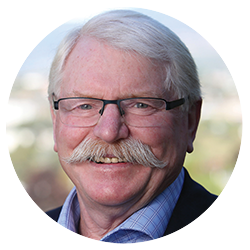
Norm Crerar
Paddler, Community Builder, Captain of winning Manitoba canoe in the Centennial Voyageur Pageant – British Columbia
“I grew up in Flin Flon, Manitoba and was exposed to canoeing at an early age via Boy Scouts and the Flin Flon Gold Rush Canoe Derby. My paddling partner Gib McEachern and I entered our first professional canoe race at the age of 16 and would go on to be a dominant team through the 1960s. Adding up our hours of practicing, racing, and now joining folks on re-enactments of trips on fur trade routes, we believe we have paddled in excess of 65,000 miles (105,000 Km). The Canadian Canoe Museum is vital to the education of Canadian youth. I look forward to helping with outreach, particularly linking small, local museums in northern Canada with the new and exciting museum and vice versa.”
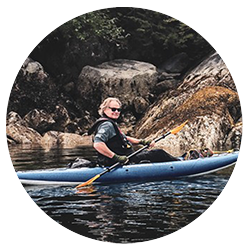
Wade Davis
Anthropologist, Ethnobotanist and Author – British Columbia
“We live in a land that for much of our history had more lakes than people. The rivers that link these waterways, known to the ancestors for centuries before European settlement, became the highways that allowed a great country to prosper and grow. We remain the only nation state that embraces both as symbol and essential means of transport a technology invented by the first peoples of the land. To travel by canoe is to touch the mystic threads of memory that bind us together as a people, even as we struggle each day to make Canada a better place for all.”
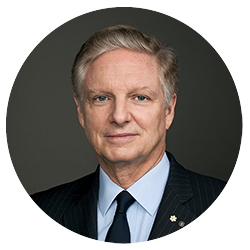
Paul Desmarais, Jr.
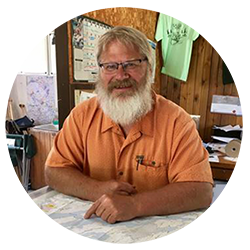
Ric Driediger
Legendary Saskatchewan Canoe Outfitters – Saskatchewan
“I have owned and operated Churchill River Canoe Outfitters in northern Saskatchewan since the mid-1980s. Before that I had been a canoe guide since the early 1970s. Canoes and all that goes with the craft have been a part of my life for nearly 50 years. Having a place that houses this critical part of not only our Canadian history, but also our present Canadian reality, is very important. It is good to be a part of this.”
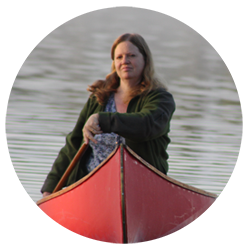
Theresa Driediger
Legendary Saskatchewan Canoe Outfitters – Saskatchewan
“In my real life, I am a psychologist. To pay for my university, I built canoes in the summer months. I love the artistry in the shapes and styles of various canoes. Canoes have been a big part of my life for the past 40 years. I love that the Canoe Museum displays canoes, both as works of art and as the utilitarian crafts they are.”
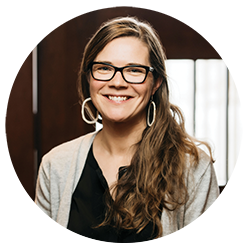
Jessica Dunkin
Social Historian, Author, Director, On the Land Programs, NWT Recreation & Parks Association – Yellowknife, NT
“I have long been an avid canoeist. For a good portion of my life, I gave little thought to the origins of the canoe or its implication in the settler colonial project called Canada. Researching and writing about the canoe—first as a graduate student at Carleton University and now as an uninvited guest on Yellownives Dene land — has allowed me to better understand the complicated history of canoes and canoeing in this country, while also creating time and space to reflect on what it means to be a white settler paddler. As I work to develop an ethical canoeing practice, one of my responsibilities is to uncover the role of the canoe in the establishment and expansion of the colonial state and extractive capitalism, and to disrupt romantic narratives of the canoe as a national symbol of cooperation and unity. Equally important is supporting projects that enable Indigenous nations and people to revitalize their relations with the canoe and the land. For all of the time I have spent reflecting on what it means to paddle against the colonial current, I have much to learn.”
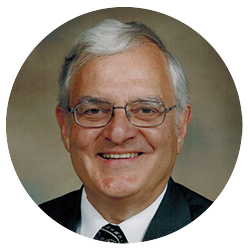
John J. Eberhard
Co-Founder (with Ronald G.J. Johnstone): Canadian Recreational Canoeing Association (CRCA), now “Paddle Canada”; Past-Chair, Canoe Canada; Cdn. Rep. to International Canoe Federation (CTC); Instructor, Tripper, Paddler; involved since its earliest days – proudly associated with the Kanawa Collection. – Quebec
“The importance of recognizing and celebrating this most ingenious technology is the raison d’être of this one-of-a-kind treasure – The Canadian Canoe Museum. From modest beginnings, many visionaries have transformed the collection into a national institution through dedication and perseverance. The canoe has multifaceted meanings in Canada: connection to the natural world, the tool of discovery, a symbol of exploration and the indigenous genius of Canada’s First Nations; a powerful means to bring people together and connect us to our greatest natural resource – the water that sustains us and the advancement of our living history through sustainable competitive and recreational pursuits.”
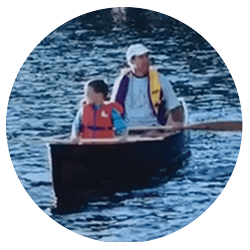
Bob Gainey
NHL Player, General Manager, Hockey Hall of Fame Inductee and Philanthropist – Ontario
“I believe preserving and displaying these many and diverse watercraft is important. It’s important because of the story they tell. It’s a story of mankind’s need to travel, need to find better, need for adventure … it’s an incredible story. Canada has many places suitable to house The Canadian Canoe Museum, but none better than Peterborough, Ontario, on the banks of the Trent-Severn Waterway. Join us in making this dream a reality.”
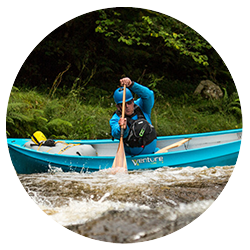
Ray Goodwin
MBE, Paddler, Guide, Coach and Author – Wales, UK
“It was my love of the canoe that drove my interest in paddling. The history of the canoe in Canada provided a rich background to this most iconic of craft. The Canoe Museum was a most visit destination on my first trip to canoe in Canada. On that first occasion I immersed myself in its contents, finding far more than just the canoe. The museum may seem to be of national importance to Canadians but it is far more than that, its importance is international. For many British paddlers, it is a place of pilgrimage. To be asked to be associated with the Museum is as great an honour to me as being given an MBE by the Queen in 2019. To be able to contribute is special.”
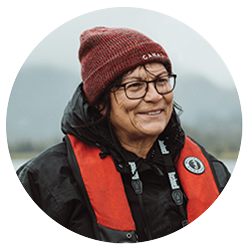
Victoria Grant
Teme-Augama Anishnabai Qway, Past Chair, Community Foundations of Canada – Ontario
“At this time in Canada, we are beginning a process for Truth and Reconciliation. Together, we need to learn, understand and acknowledge our shared history. We can’t do that without first knowing and understanding the impact of the canoe in Canada’s story, from those very early times when the first visitors came to our shores. The Canadian Canoe Museum provides us with an opportunity to learn, to feel, to smell, and to see the canoe in its diversity and endurance.”
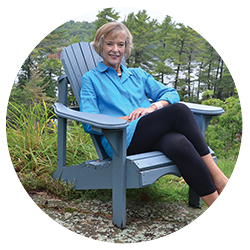
Charlotte Gray
Author and Historian – Ontario
“Canoe routes criss-cross Canadian history; canoes have made possible our unique country. They symbolize survival and trade, exploration and adventure, for both Indigenous and non-Indigenous peoples. As we struggle towards reconciliation between the different narratives of the past and for the future, the Canoe Museum can play a crucial role in bringing people together to marvel at the skill of canoe-builders who created vessels that are superbly adapted to this landscape. Canoes are extraordinary artefacts, reliable workhorses, and an emotional link for all of us with the outdoors.”
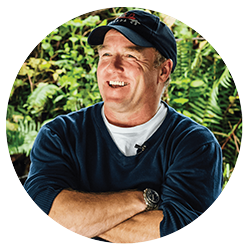
Geoff Green
Community Builder and Founder, Students on Ice Foundation – Québec
“The Canadian Canoe Museum is a national and international treasure. A unique portal to our past, present and future, with a lifetime of inspiring and profound stories to share. Stories that remind us of our connections to each other and to Mother Earth. I am honoured and proud to serve as a member of the Museum’s National Council.”

Neil Hartling
River Guide, Conservationist, Author, and Founder of Nahanni River Adventures – Yukon
“Built my first canoe as a kid in shop class – a magic carpet to adventure. Later I met Kirk Wipper and was captivated by the big canot du nord. In 1985 I founded Nahanni River Adventures and designed 8.5M (28’) voyageur canoes that disassembled in 8 pieces that nested to fit in a Twin Otter. The eco-adventure company grew and became a powerful platform for conservation, enabling us to provided leadership in the expansion of Nahanni National Park to protect the Greater Nahanni Watershed, becoming one of the largest parks in the world. Most recently it was the Yukon’s Seven Sacred Rivers of the Peel Watershed, another of the world’s large protected areas. Canoes were a powerful, essential tool in these campaigns. The canoe museum is crucial to preserve the canoe legacy, and inspire future generations to do great things.”
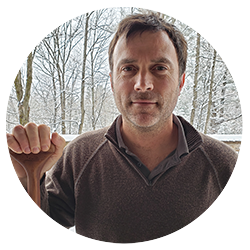
Patrick Henry
Paddler, President and Founder, Canadian Canoe Foundation, Executive Director, NatureServe Canada – Québec
“Canoe tripping provides the most impactful education regarding Canada’s natural heritage and the critical importance of clean water and healthy ecosystems. Wilderness canoe tripping soothes the soul by simplifying your concerns to core requirements (i.e., food, shelter, water tight canoe). The bigger picture becomes clear. I am honoured to serve on the Canadian Canoe Museum’s National Council. The museum is doing an amazing job in promoting the past, present and future of the canoe, and in developing innovative programs to generate enthusiasm and understanding of canoeing and the canoe.”
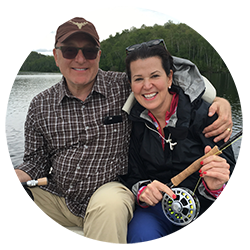
Bruce and Vicki Heyman
Former US Ambassador to Canada, Cultural Envoys, Paddlers, and Friends of The Canadian Canoe Museum – Illinois
Bruce
“Growing up in Dayton, Ohio, I had the opportunity to spend some of my summers at a sleep away camp starting at a young age. One of my strongest memories of this experience is relaxing on the water, taking in the sights and sounds, paddling with a camp mate with no destination in mind, negotiating who got front and who got back. Canoeing to me is about teamwork, nature, youth, and beauty, and I am thrilled to be able to join the National Council team at The Canadian Canoe Museum.”
Vicki
“I remember my first canoe experiences as a young girl at camp in West Virginia I loved gliding through the water connected to nature in a way that I had not experienced before. I remember the feeling of adventure, wonder and calm. Spending 3 years in Canada reconnected me to that little girl who experienced such wonder at the vastness and beauty of nature. I’m excited to join this diverse community of voices on the National Council at The Canadian Canoe Museum.”
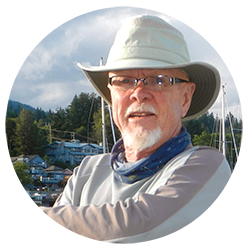
Ed Hill
Paddler, Community Builder and Founder, Pulling Together – British Columbia
“I grew up in Peterborough. My father actually worked as a welder in the building that now houses the Canoe Museum when it was ‘Outboard Marine’. I joined the RCMP in 1968. Little did I know then that it would ultimately be my connection with canoes, in life altering fashion. My first real exposure to the big ocean-going canoes of the west coast was in 1997 when, as an RCMP member, I participated in the VisionQuest Canoe Journey. The value of that 1,300 kilometer journey, in terms of reconciliation with the Indigenous people of the west coast, moved me to create an annual canoe journey of reconciliation and healing called Pulling Together. My goal in participating in the Canadian Canoe Museum National Council is to help establish exposure to the ancient canoeing culture and the ingenious and unique canoes out here on the west coast of Canada. It has been experiencing resurgence of late, from a continuum of over 10,000 years.”
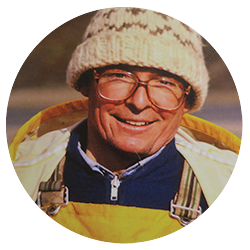
Ted Johnson
Paddler, Philanthropist and Community Builder – Québec
“If The Canadian Canoe Museum didn’t exist, we’d be working very hard right now to create it. How fortunate we are to have this iconic assemblage, and how important it is to preserve and enhance it, and share it with generations to come.”
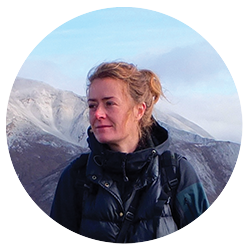
Genesee Keevil
Journalist, Wilderness Guide, Musician – Yukon Territory
“The mediative movement of dipping and drawing a paddle through water, propelling a silent canoe, remains one of the most satisfying reminders of the beauty found in simplicity. In our fast-paced world, where people are increasingly becoming one with their technology, I can’t think of a more important time to be championing the clarity and un-plugged connection that canoeing offers.”
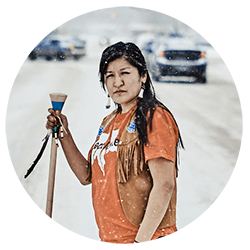
Bobbi Rose Koe
Teetl’it Gwich’in, Emerging leader, Community Builder, Paddler, Wilderness Guide, Environmental Activist – Northern Canada
“Growing up, I always heard stories of how the Gwich’in people moved around from place to place in the north following the caribou. After spring, they paddled down from the Peel Watershed to Teet’it Zheh/Fort McPherson, surviving the epic yet beautiful Tshuu tr’idaodìich’uu/ Peel Canyon. So listening to stories growing up, they make you wonder or to dream at night thinking of this beautiful and wonderful place my people call, Kegwaadhat’s country, meaning creator’s country in Gwich’in, referring to the Peel Watershed.In 2015, I got the wonderful opportunity to paddle the Peel Watershed, where once my ancestors paddled. I fell in love. I felt honoured, loved and inspired. Since then, every time I get a chance, I made it a goal to spend most of my time, “out on the land”—to learn, teach, honour, and respect.
Being on the National Council, I believe I can share a unique perspective of a Young Gwich’in woman, who was raised by her grandparents and community out on the land, travelling to many places throughout the Gwich’in country—who follows in the footsteps of her ancestors, just in a different way.”
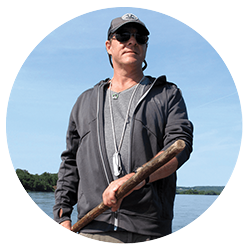
Philip Lee
Journalist and Professor – New Brunswick
“My workhorse canoe was built by Bill Miller, who lives in Nictau, New Brunswick, beside the Tobique River. It was constructed on a mould designed a century ago by Tobique guide Burt Moore, who wanted a wider canoe with low gunwales, that would be light and stable for poling his clients and large loads of gear up and down the river. He called his revolutionary design the Guide Special. Bill Miller’s grandfather acquired the Moore mould. My 22-foot Miller Guide Special floats like magic across shallow water, a perfect union of art and technology. You can discover Bill Miller’s work at The Canadian Canoe Museum, or on one of New Brunswick’s many fine rivers. On my best days, that’s where you’ll find me.”
WATCH NOW: Episode 3, National Council in Conversation with Philip Lee
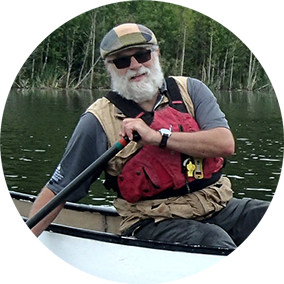
Mark Lund
Professor, Author, Paddler, Brigade Organizer – Alberta
“I have been enamoured with, and a supporter of the Canoe Museum since my first tour of the collection in the fall of ’72, during the founding meeting of the Canadian Recreational Canoe Association that Kirk Wipper hosted at Camp Kandalore. As an Alberta paddler for nearly 60 years, my visits to the museum have not been as frequent as one would like. That in no way diminishes my belief that the work of the museum in saving, recording and animating the canoe as an iconic symbol of, and fundamental to the development of our country, our culture and other cultures, must be supported.”
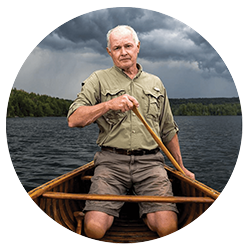
Roy MacGregor
Paddler, Writer and Globe and Mail Columnist – Ontario
“No canoe, no nomadic First Nations. No canoe, no exploration by the Europeans. No canoe, no Canadian economy. No canoe, no settlement. Ottawa has a Museum of Nature, a Museum of Science and Technology and a Museum of History — Peterborough’s Canadian Canoe Museum will combine all three and offer even more.”
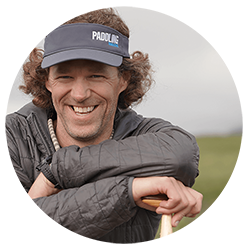
Scott MacGregor
Publisher and CEO, Rapid Media – Ontario
“While my children have literally grown up in canoes and kayaks and the health of the paddling industry is normal dinnertime conversation, it wasn’t until they visited The Canadian Canoe Museum did they realize the importance of the canoe in Canada’s history. Readers of our magazines, new to paddling, tell me the same. Understanding the history of the canoe and the country, adds a feeling of authenticity to our time on the water, no matter which river, lake or ocean we happen to be paddling.”
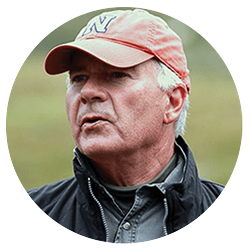
Peter Mansbridge
Broadcaster and Former Chancellor, Mount Allison University – Ontario
“The canoe is quintessentially Canadian and if you’re not convinced of that you haven’t travelled the world. Show anyone a canoe and their response is almost unanimously ‘Canada’! The canoe talks about our origins, it talks about our development and it talks about our continuing commitment to protecting the environment and honouring our past.”
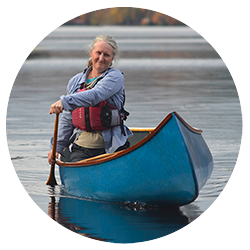
Becky Mason
Artist, Canoe Instructor, Filmmaker, Paddler – Québec
“I have spent my entire life in and around canoes, many many canoes! But when I first encountered Kirk Wipper’s collection of canoes at Camp Kandalore I was filled with wonder and awe. What really struck me that day was the astonishing variety and diversity of craft from all over the world. Until then I was under the impression that most canoes were red and best ones were called Prospectors, but Kirk’s incomparable museum took me far beyond anything that I thought “canoe” was.
And I still get those same feelings every time I step through the doorway of the Canadian Canoe Museum. But the museum is not only the vessels therein. It’s the stories and histories that these vessels carry that are the Canadian Canoe Museum and it is these stories that transform these craft into significant cultural touchstones. It is my vision for the museum to burst beyond its walls and to share and exchange and document and conserve all of the stories and histories held by all of the world’s wondrous vessels that we call canoe.”
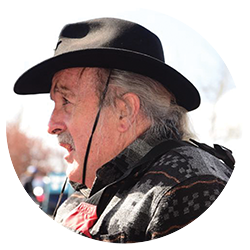
Larry McDermott
Member of Shabot Obaadjiwan First Nation, Commissioner of Ontario Human Rights Commission and Executive Director, Plenty Canada – Ontario
“The canoe is a lightning rod for our shared history—Indigenous and non-Indigenous. In 1764, the year after the Proclamation of 1763, let’s remember that when 2500 representatives of First Nations throughout Turtle Island attended a gathering at Fort Niagara—some of whom took three months just to get there, and three months to get home of course—they got there by canoe. The canoe brought us together to build this country and set the relationship. It’s critically important to understand that Indigenous cultures—and I use the plural because there were many different Indigenous cultures—built different canoes for different reasons. Canoes reflected their environments. They reflected their understandings, their epistemologies, their cultural foundations. The canoe illuminates the cultural strengths that built Canada. And that’s why a national museum dedicated to the canoe is critically important.”
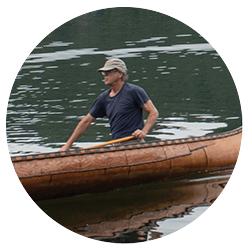
Mark McLean
Paddler and Philanthropist – Ontario
“I have been following the museum since I first discovered the collection at Camp Kandalore 30 years ago. The canoe was used by the First Nations for millennia before the Europeans adopted it to explore and develop Canada as a nation. What could be more appropriate than the canoe as a symbol for a nation of rivers and lakes?”
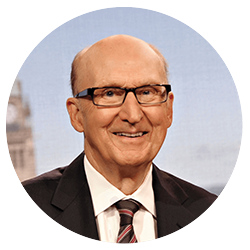
Craig Oliver
Legendary Wilderness Paddler and Broadcaster – Ontario
“As the founder of the Arctic Circle and Rideau Canal Canoe Club I’ve seen a lot of this country by canoe over the last 60 years and know that The Canadian Canoe Museum is an essential part of preserving this heritage. I’m delighted to be a member of the new National Council and look forward to helping to see the museum’s ambitious plans realized.”
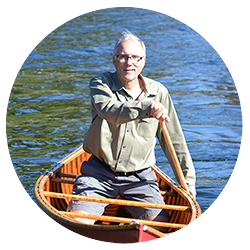
Sanford Osler
Paddler and Author, “Canoe Crossings: Understanding the Craft That Helped Shape British Columbia” – British Columbia
“Just as canoes helped build and define a nation, so too can the new Canadian Canoe Museum help strengthen it by connecting those with an interest in this fascinating craft and being a bridge between cultures in the journey of reconciliation.”
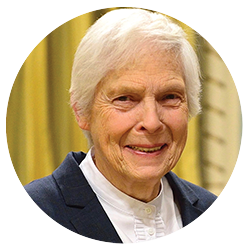
Jocelyn Palm
Director Glen Bernard Camp, President Near North Enviro-Education Centre – Ontario
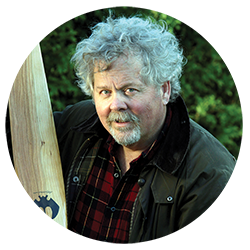
Michael Peake
Photographer and Editor – Ontario
“The canoe was the vessel to Canada’s wilderness for me and countless others. With our group the Hide-Away Canoe Club we paddled numerous northern rivers over many years, following historic routes. I knew Kirk Wipper for years and am so happy to be a part of his dream by joining the National Council. Our HACC motto, from Alpine Club of Canada founder J. M. Thorington: “We were not pioneers ourselves, but we journeyed over old trails that were new to us and with hearts open. Who shall distinguish?”
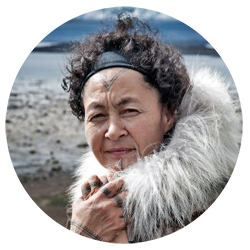
Aaju Peter
Inuk Lawyer and Activist – Nunavut
“The umiaq (women’s canoe) and the qajaq (kayak) made it possible for Inuit to travel Inuit Nunangat (land and waters of the Inuit) from Siberia, Alaska, Canada and Greenland for over a thousand years. The umiaq was made of drift wood or bone and then covered with seal or walrus skin. In late spring and summer when the ice would leave the coast the women rowed the umiaq escorted by men in their qajaq to their hunting grounds. Today the 24 out of the 25 Inuit communities in Nunavut are coastal. We still use the umiaq as our mode of transportation. This modern day version of the umiaq transports us to our hunting grounds and our cabins. A time for enjoyment and replenishing for our bodies, souls, and minds. A time to reconnect with nature and all it has to offer. It is wonderful to have a museum dedicated to the umiaq as it is an integral part of the shared heritage of both Indigenous and non-Indigenous peoples of Canada.”
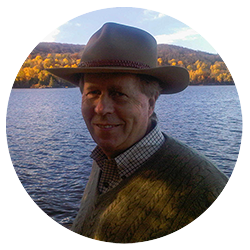
Rob Prichard
Rob Prichard, Paddler, President Emeritus, University of Toronto – Ontario
“Canoes have been part of my life for as long as I can remember. My father bought our first Chestnut as a symbol of his embracing Canada shortly after we emigrated from the UK when I was very young and I have been canoeing ever since: first with my father, then with my sons and now my grandchildren. Canoes are central to who we are as Canadians and the new Canadian Canoe Museum will deepen that connection for generations to come. It is not just about building a museum; it is about building a country.”
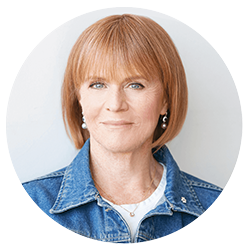
Valerie Pringle
TV Host, Journalist and Chair, The Great Trail – Ontario
“Canadians have to love the canoe. It is the vessel that opened this wild country; a marvel of engineering, practicality and beauty. The sound of it is beautiful! We owe it so much. The Canadian Canoe Museum honours its history, both Indigenous and non-Indigenous, its contribution, its lore and its elegance.”
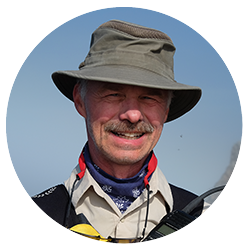
Tom Potter
Paddler, Professor of Outdoor Recreation, Parks & Tourism, Lakehead University – Ontario
“For me, the canoe is about connections: to place, to others, to self, to spirit. Through exploring many waterways in Canada, the canoe has taught me to deepen my respect and wonder of the natural world. As a child on the lakes of Southern Quebec it helped me to develop inherent life-skills and values associated with canoeing, and enhance my curiosity for and self-confidence in exploration. As a parent and university professor I’ve witnessed the canoe’s power to educate, to foster emotions such as appreciation, wonder and joy, and bring people together in meaningful ways; it is truly a builder of community and, for many, a nurturer of the soul. As an evocative symbol of Canada and tool for those who have come before us, the canoe can inspire Canadians to reach out to one another. I am honoured to support the Canadian Canoe Museum through the National Council to help promote this important cultural icon as an enabler of our nation’s spirit, as a vehicle for reconciliation, and towards the protection of the natural world.”
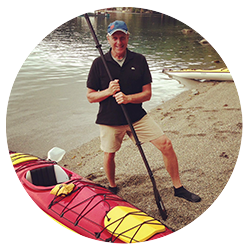
Michael Robinson
Anthropologist, Writer and Past CEO of the Bill Reid Foundation, the Glenbow Museum and the Arctic Institute of North America – British Columbia
“I support the National Council to support the museum and its mission from Skelhp, on the Sunshine Coast of British Columbia. I live on the Salish Sea, fish for many family dinners, and acknowledge our family’s good luck to live near Tla’amin Nation treaty lands. Skelhp means, The place where the ancients dropped down from the heavens, and taught us to make canoe paddles out of Yew wood.”
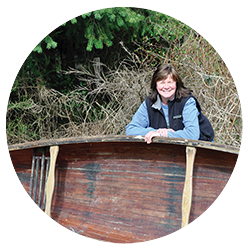
Shelagh Rogers
Broadcast-Journalist, Truth and Reconciliation Commission Honorary Witness – British Columbia
“The Canadian Canoe Museum is a project of optimism. The canoe as even a concept implies moving ahead, pulling together. It suggests journeying, peace, play, reflection and wonder. The superb collection held by The Canadian Canoe Museum, unique in all the world, connects us to where we have come from and points to where we could go. It is vital that in this time of truth and reconciliation that we understand the true history of Canada. The canoe, in all its shapes and lengths, tailored by Indigenous peoples to specific waterways, shared with non-Indigenous people, is central to this understanding. The award-winning education programs, the excellent curation of the collection and the openness and generosity with which the knowledge and stories of the vessels are shared, all add up to an unparalleled experience for a Canoe Museum visitor. It’s great now, and I can’t wait for the ravishing new museum to open right where it should be, by the water. Oh, the places we’ll go!”
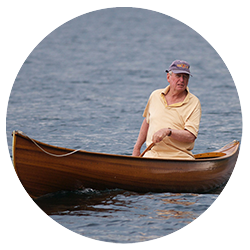
Donald M. Ross
Paddler, Philanthropist, Champion of the Canadian Canoe Museum – Ontario
“It was Jack Matthews, former Canadian head of Pearson College, previously head of Lakefield College School and part of the museum’s founding group in Peterborough, who got me involved in the very early days. The idea was to build out a collection of manually powered watercraft starting with Kirk Wipper’s large canoe collection which badly needed a better home. And so The Canadian Canoe Museum was born. The city donated the former Outboard Marine Corporation premises. Volunteer labour transformed the office building into exhibit and reception space. And now, onward to the new location. Having been connected to the museum through its ups and downs over the years, as a donor and board member, I am delighted to continue my support as a member of the museum’s National Council as the organization transforms into a world class programming and display centre.”
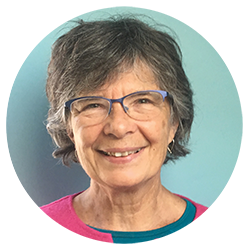
Candace Savage
Writer and Naturalist – Saskatchewan
“I will never master the J-stroke or perfect a scull or draw, but I love the silent glide of a canoe across still water, its silvered trace. Appropriate technology at its finest, the canoe can take us places we would never otherwise be able to enter: new territories, new understandings, new connections among peoples.”
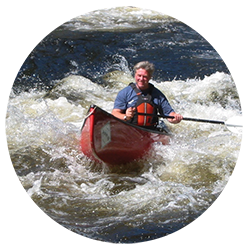
Wally Schaber
Founder of Black Feather Wilderness Adventures, Co-founder of Trailhead, Paddler, Outfitter, Historian – Québec
“Canoes and canoeing have been my vocation and recreation since I first learned to paddle at Camp On Da Da Waks on Golden Lake in the 1960s. After being associated with The Canadian Canoe Museum off and on over the years, it is an honour and pleasure to join the National Council to help the museum achieve its short and long term goals over the next decade.”
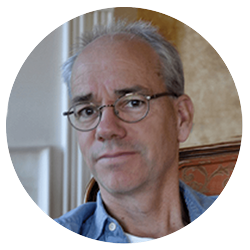
Andrew Stewart
Archaeologist and Board Member, McLean Foundation – Ontario
“Canoeing has certainly been an important part of my life, from summer camp days onwards — a time-honoured way to get to know Canada in the summer and fall. As a schoolboy, fur-trade history sparked my imagination, as did Canada’s geography of rivers. I think supporting The Canadian Canoe Museum is critically important to serve the needs of its nationally significant collections and programming. In an age of post-truth, the museum provides a way to connect to Indigenous traditions and some of the real history of our water-coursed land.”
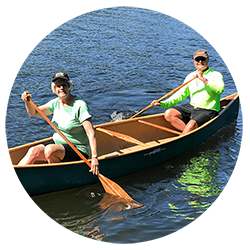
Jim and Katie Stewart
Sprint Paddler, Philanthropists – Ontario
“Our family has been involved in canoeing: racing, tripping and just fun leisure canoeing our whole lives. When my wife Katie and I made a new life for ourselves in Peterborough 11 years ago we naturally gravitated to The Canadian Canoe Museum which needed some support. This museum not only represents our family’s love for canoes and paddling, but it is a fun way to teach the next generations about the history of Canada. The exhibits tell a number of stories about our past and go to the core of what is means to be a Canadian. It is clearly a national treasure that deserves our continued support.”
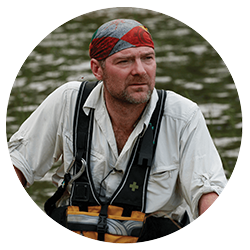
Les Stroud
TV Personality, Filmmaker and Musician – Ontario
“Were it not for the canoe we would have a much different Canada and much of history would have to be re-written. Were it not for the canoe, my life, my career and my love of nature would have never been as potent and profound as they are now. I could not be more proud to be an ambassador for and to sit on, the National Council for The Canadian Canoe Museum. Their work is not only celebrating and preserving the story of a recreational watercraft; it is celebrating and preserving the story of Canada. It’s the story of an entire country with a personal connection to nature. A connection that began with a canoe.”
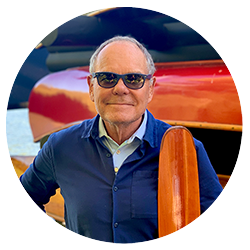
Don Tapscott
Author, Educator and Entrepreneur – Ontario
“Some of the strongest and most powerful memories of my youth center on being in a canoe. I learned to paddle at Camp Wa-sa-ah-bun on Georgian bay, the erstwhile summer camp of the St Catherines YMCA and also a Geneva Park on Lake Couchiching. Canoe trips were one of the greatest challenges and joys of those days. I learned about developing my skills, strength and stamina. I learned to struggle to achieve goals, whether make that long portage after a long day: to find a good camp site, sometimes in the dark; to get a fire going in the rain; or even to stay safe in a thrashing rapids. I learned about collaboration and trust and developed friendships that lasted decades. I acquired a deep love for our country — its lakes and rivers, its precious living things and our indigenous heritage. Many years later, I convinced my wife, who had been born in Europe that our children needed to experience this, and just last weekend my adult daughter and her husband spent their wedding anniversary in Algonquin Park.
The Canadian Canoe Museum, celebrates not just an artifact, but some of the history, culture and values that make us Canadian. My dream is that every young Canadian could experience what I did, and perhaps the Museum can help fulfill that dream.”
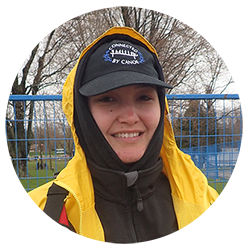
Kristen Ungungai-Kownak
Inuit Youth Leader, Land Administrator at Crown-Indigenous Relations and Northern Affairs Canada – Iqaluit, Nunavut
“The canoe can be a metaphor for, as a society, how we pull together. If we don’t do that, we’re not going to be able to go forward. How do we mend the relationships between Indigenous and non-Indigenous Canadians? How do we close the equality gaps that are in our society? And how do we do that in unity? Through its programs, the Canadian Canoe Museum is helping to answer those questions.”
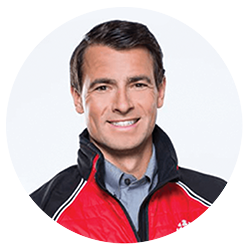
Adam van Koeverden
Olympic and World Champion Kayaker – Ontario
“I’m often heard plagiarizing someone wise when I say ‘there probably wouldn’t be canoes without Canada, and there wouldn’t be a CANADA without canoes’. As a kayaker, I feel really fortunate to have been able to use an Inuit invention to race for Canada over four Olympics and all the races in between, and I can’t think of a better place to celebrate and educate all things paddling than The Canadian Canoe Museum.”
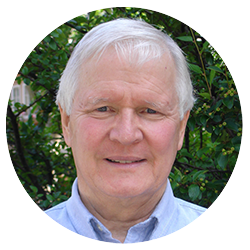
Doug Ward
Radio Innovator and Pioneer (CBC & Farm Radio International) and Longtime Friend of the Canadian Canoe Museum – Ontario
“The canoe has been a source of pleasure and sport for me for seven-plus decades – first on still lakes, then on wild rivers, now back to still lakes! I have also been fascinated by its crucial role transporting both First Nations and European explorers as they probed this wide land. We are so fortunate to have a museum that preserves a world-class collection of canoes, and whose knowledgeable and enthusiastic staff so effectively engage new generations in the story of this Canadian icon. It is exciting to support the Canadian Canoe Museum in its voyage to a new site that will celebrate the canoe’s contribution to Canadian life more effectively.”
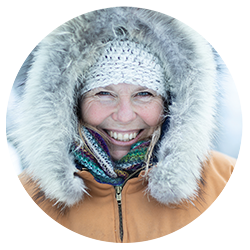
Mindy Willett
Author, Educator, Paddler, Social Studies Curriculum Planner (GNWT) – Northwest Territories
“I was fortunate to grow up shaped by the white pines of Atikokan Ontario – the Canoe Capital of Canada. Atikokan means ‘place of caribou bones’ in Ojibwe and my childhood included canoe trips which greatly shaped my life ethos. I attended Trent University and was influenced by incredible professors, classmates and courses which included canoe trips where we were challenged to think critically about the role of the Canoe in Canadian context. While at Trent and in visits to Peterborough since I’ve had the opportunity to see the vast collection. The Canadian Canoe Museum has a unique role to play in creating a space, both physically and metaphorically, for all of us to think about the complexities around the canoe and the role museum collections in general play within our society. Currently I’m blessed to live on Yellowknive’s Dene land on the shore of Great Slave Lake and spend my winters dreaming about the next place to dip my paddle when the ice retreats.”
WATCH NOW: Episode 4, National Council in Conversation with Mindy Willett
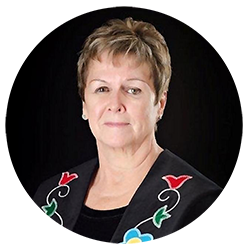
Phyllis Williams, Past Chief, Curve Lake First Nation
First Nations Leader and Community Builder – Ontario
“The Canadian Canoe Museum is an incredible place to explore and appreciate the largest collection of canoes and kayaks. The museum is a reflection of the history of Canada and its people, a starting place to learn about the contributions and experiences of Indigenous peoples and the merging of nations and cultures in the early years. This place is unimaginable. One cannot adequately appreciate the collection until you visit; and then, the experience becomes contagious.”
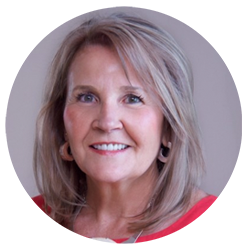
Marie Wilson
“When I think about water, I think about cleansing, healing, praying and connecting. When I think about canoes, I think about being in the ebb and flow of all of this.
A few years ago I hiked the ancient, thousand kilometre Camino pilgrimage trail from southern France to the Atlantic coast of Spain. It is a profound journey in the footsteps of kings and paupers, the humble and heroic, saints and inquisitors, the legendary and unsung. After six and a half years as a Commissioner with the Truth and Reconciliation Commission of Canada, for me, it was a journey of healing and restoration. The Camino is a trek overland…yet traced by water. Water accompanied me everywhere; a creek, a stream, a river. My daily practice became sacred contemplation beside one of those waterways…to hear it, to smell it, to feel it, and to let it wash away any doubts I had about making it through another 25 kilometres on foot to my next destination. The prayerful aspect of my ritual came from the Dene tradition of ‘paying the river’ with tobacco to pray for a safe journey.
The Camino waters became a gentle reminder of a lesson I learned 40 years ago on my first major canoe trip, paddling from outside Whitehorse, Yukon to Dawson City. Water teaches us by example, whether we are in it, on it, or beside it: keep moving forward, go with the flow, stay strong and present in the current of whatever twists and turns lay ahead, recognize precious moments to pause and enjoy the ride, and always respect the spirit of the water, knowing that it is perpetually re-supplied with an eternity of sweat, tears and prayers from the millennia of all our ancestors.
Water flows through all of us, reminding us, profoundly, that we are all related. The Canadian Canoe Museum reminds us, profoundly, that we have always used our waterways to try to reach each other. In so doing, we continue to discover ourselves and to shape and re-shape our country.”
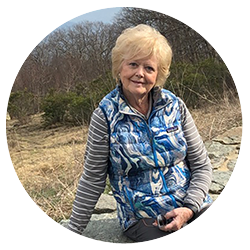
Ann Wipper
Ontario
“Kirk Wipper used these words “To Know, To Care and To Act” in speaking about the environment. I will apply them to the museum.
TO KNOW the history of the craft and of the indigenous people who created them.
TO CARE about our heritage, the natural world and our fellow man by developing positive attitudes.
TO ACT responsibly to ensure this treasure is preserved for our grandchildren to inspire them to learn about their heritage and this great country, Canada through the eyes of the canoe.
The canoe is a symbol of quiet solitude, communing with nature and ourselves. It gives one the ability to go around the bend to places one can only see in a canoe. Be still and listen with our hearts. Is this not peace? We can use this symbol of peace to move among all nations. To connect with others as one does in camping or travelling to showing love and acceptance.
TO KNOW others as they are,
TO CARE about who they are,
TO ACT to bring harmony to the world. Understanding to prevent further undoing to the beauty of our natural world.
This is my passion, the power of love, the power of the canoe. Believe in nature. Believe in the canoe. This is the importance of The Canadian Canoe Museum
Thank you, Kirk for this amazing gift to Canada”
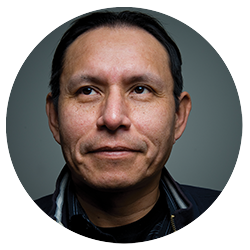
John B. Zoe
Negotiator, Mentor, Paddler, Senior Advisor Tłįchǫ Ndek’àowo (Tłįchǫ Government) – Northwest Territories
“Our first real organized canoe trip happened in 1988 when we were meeting with Elders, talking about going on the land and maybe even having a gathering out somewhere in the bush. They said, ‘We’re living in times of conflict and we need something to have peace within ourselves and among each other so that we’re speaking the same language and we have the same goals. And one of the best ways to do that is to go back onto the land.’ From a speech by John B. Zoe called “Following the Trails of Our Ancestors: Re-grounding Tłįho knowledge on the land.”
WATCH NOW: Episode 2, National Council in Conversation with John B. Zoe






